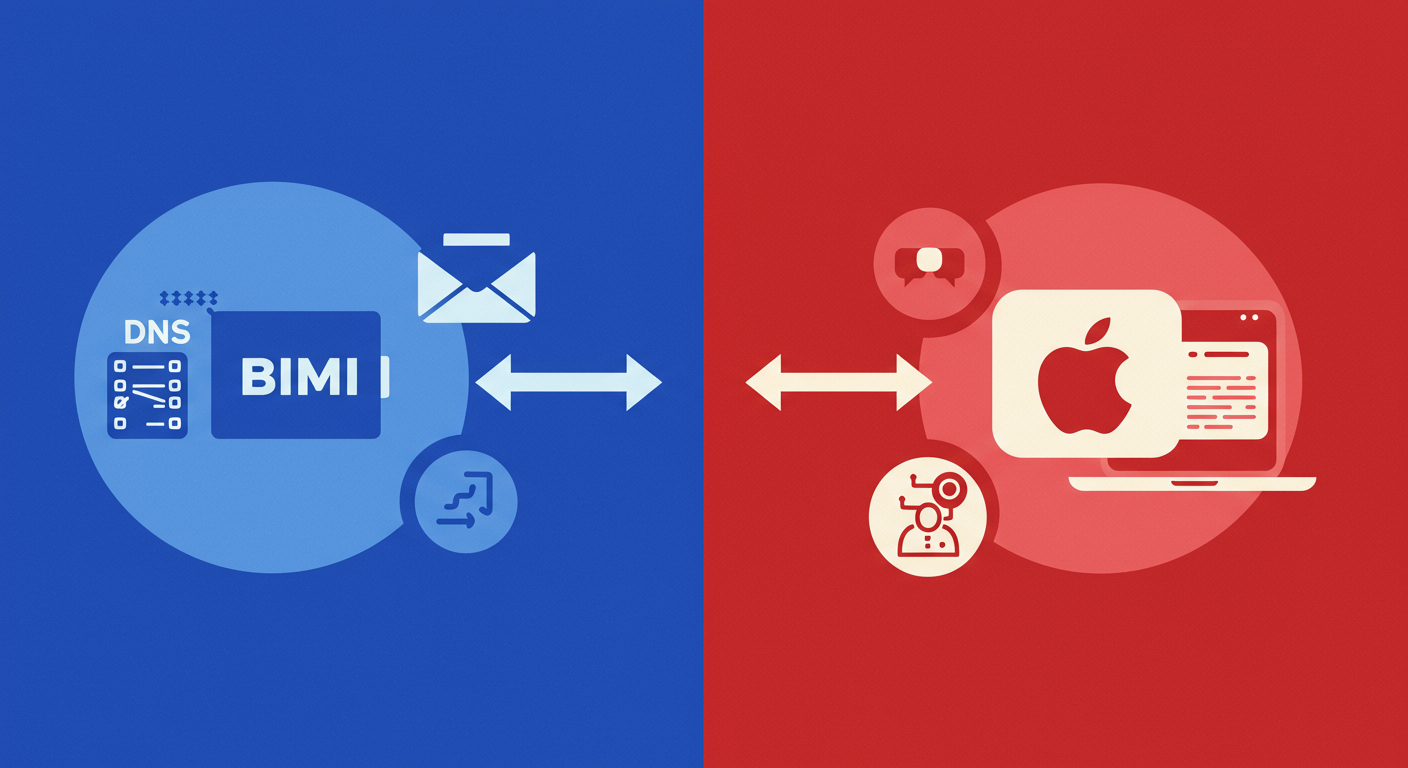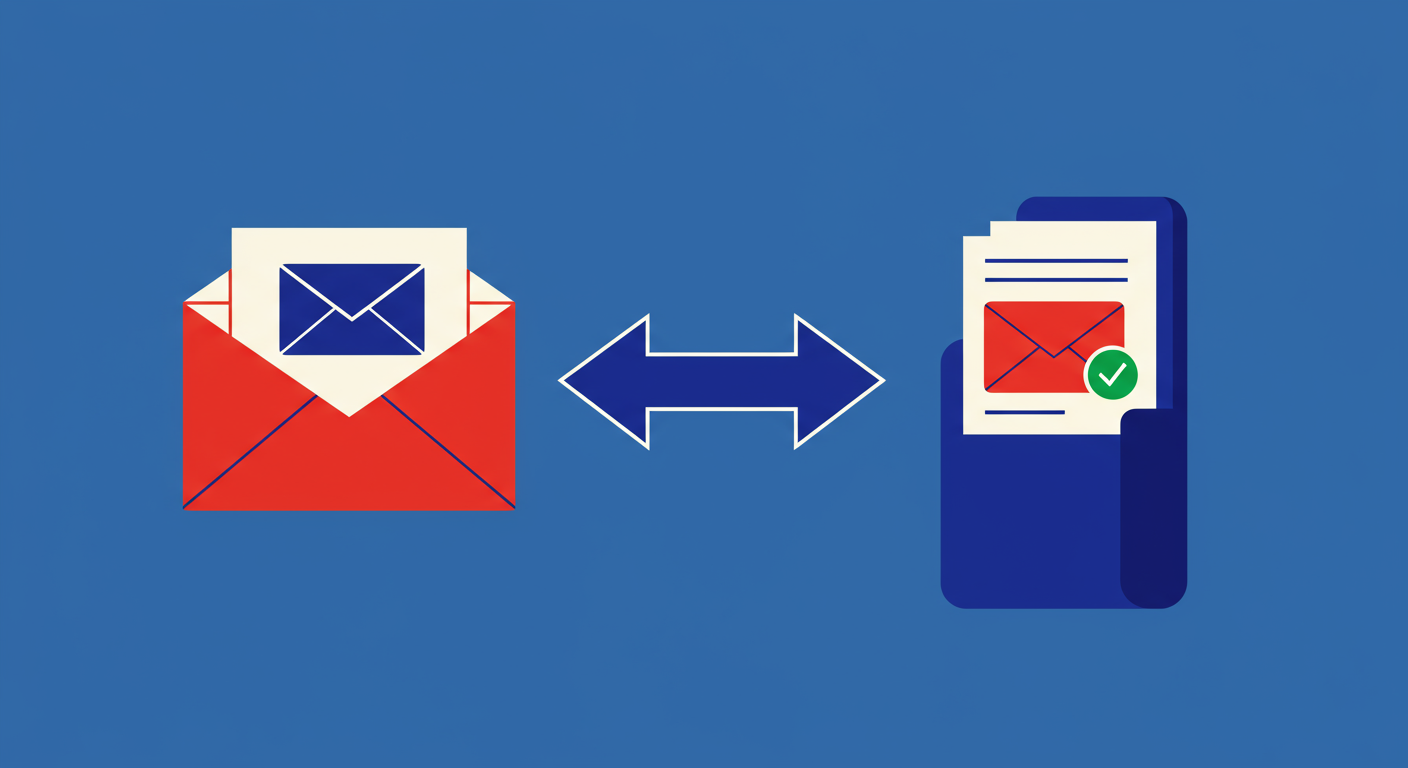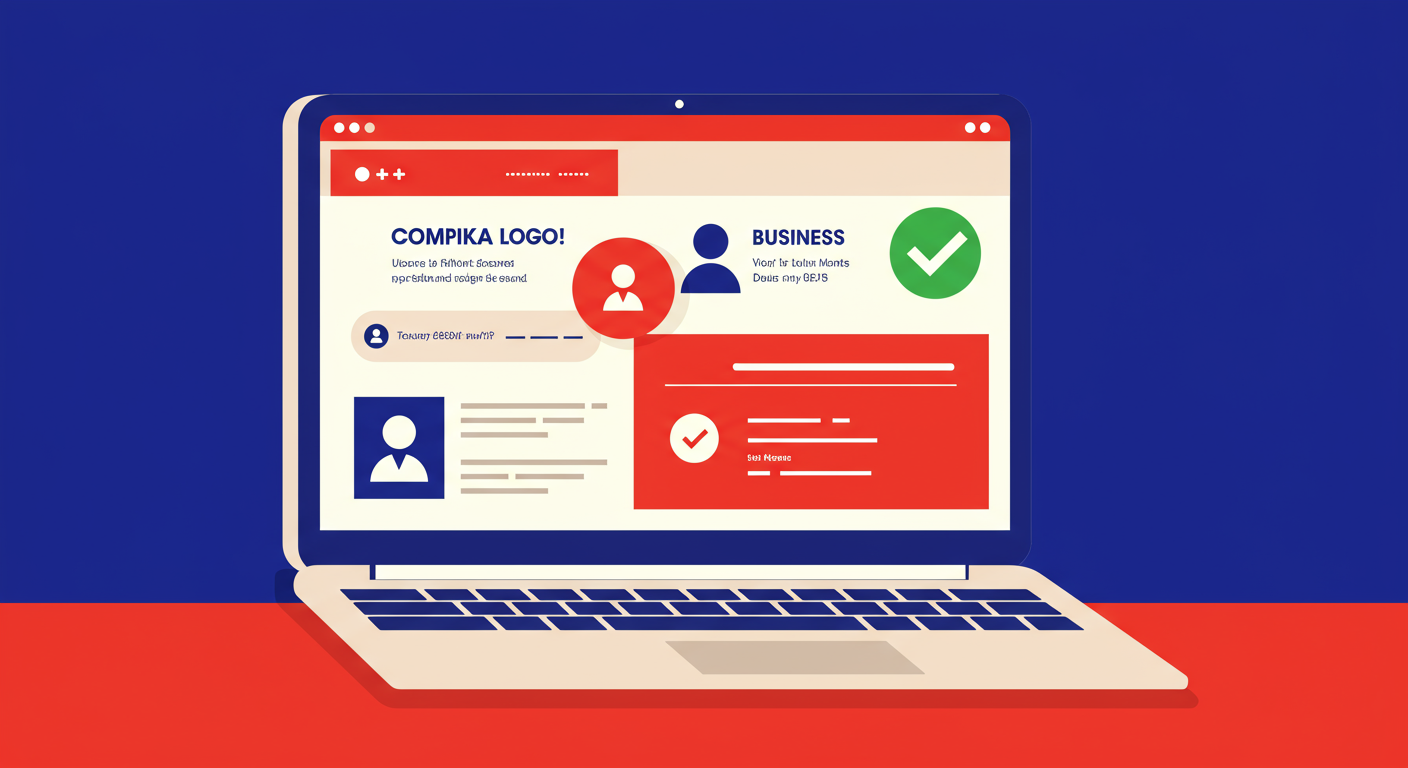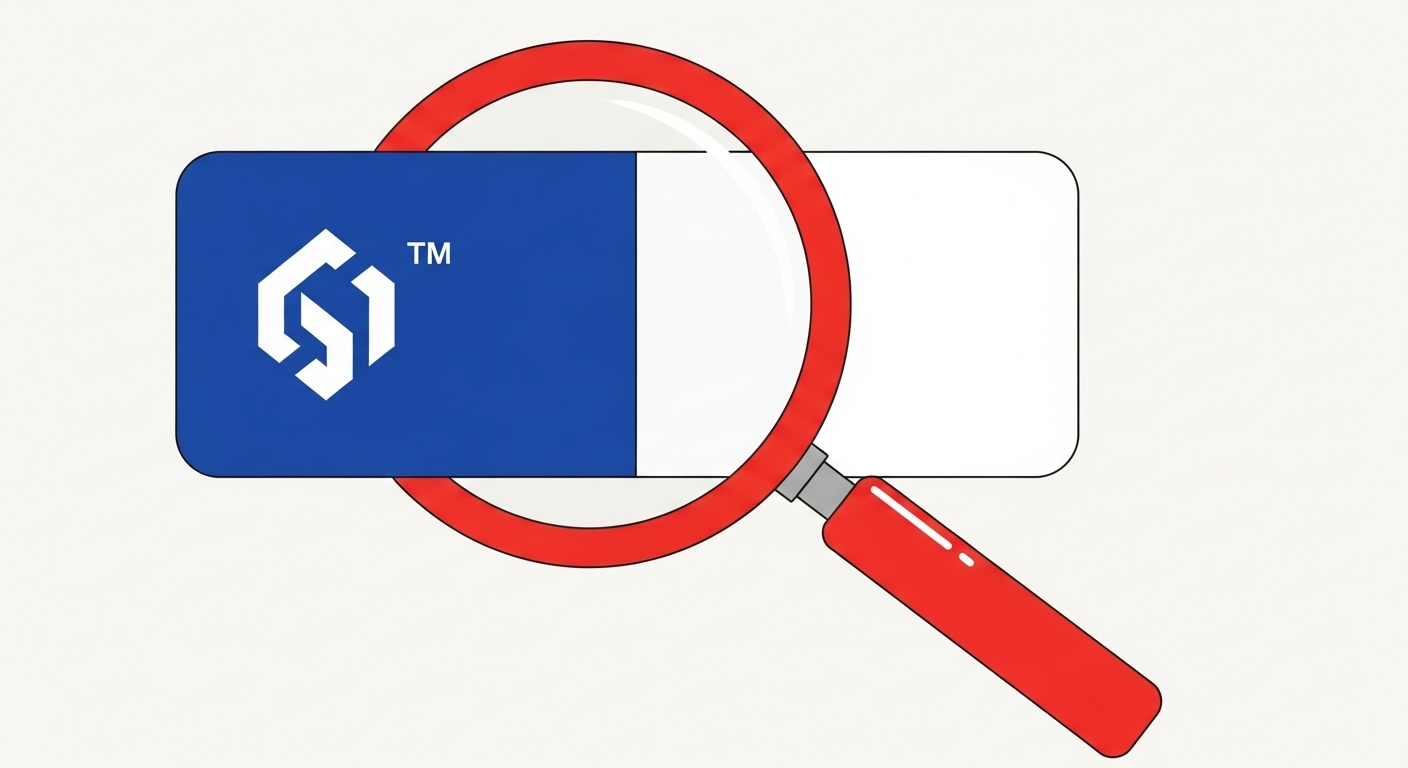
For years, the gold standard for getting your brand's logo to appear in a recipient's inbox has been BIMI (Brand Indicators for Message Identification). It's a powerful way to build trust and brand recognition. Recently, however, Apple entered the scene with its own solution called Apple Business Connect, causing a stir and some confusion in the email community. Many people are asking if this new feature is just Apple's version of BIMI, or something else entirely.
The short answer is: they are not the same thing. While both aim to display a logo in the inbox, they operate on fundamentally different principles, have different setup processes, and cover different sets of mailboxes. Understanding these differences is crucial for any brand looking to maximize its visibility and security in the inbox. In this guide, I'll break down both technologies, compare them side-by-side, and help you decide on the right strategy for your business.
BIMI, or Brand Indicators for Message Identification, is an open email standard designed to make it easy for brands to display their official logos next to authenticated emails. Think of it as the verified blue checkmark for your email. It works by linking your logo to your domain through a DNS record, providing a signal to mailbox providers like Gmail and Yahoo that the email is legitimate and from you. This visual cue helps recipients quickly identify and trust your messages.

Implementing BIMI is not a simple flip of a switch. It requires a solid foundation of email authentication. Specifically, your domain must have a strict DMARC policy in place, with a policy of either p=quarantine or p=reject. Additionally, you need a logo in a specific SVG Tiny P/S format. For many major mailbox providers, you also need a Verified Mark Certificate (VMC), which is a digital certificate that proves your ownership of the trademarked logo.
The effort is well worth it for many brands. Beyond the immediate benefit of logo display, BIMI encourages stronger email security practices through its DMARC requirement. It's an industry-wide standard, meaning one implementation can cover multiple major email platforms. This wide support makes it a cornerstone of a modern email deliverability strategy, enhancing brand visibility and trust wherever your customers are.
Apple Business Connect is a much broader platform than just an email tool. It's a free, web-based portal from Apple that lets businesses manage their brand identity across the entire Apple ecosystem. This includes how your business appears in Apple Maps, Siri, and Apple Wallet. The feature that directly competes with BIMI is a component of this platform called "Branded Email".
The Branded Email feature allows verified businesses to display their logos in Apple Mail clients on iOS and macOS. Unlike BIMI's reliance on DNS, this system is managed entirely within the Apple Business Connect portal. You register your company, provide business verification documents, and once approved, you can configure your brand identity attributes, including your logo and sending domains.
One of the most significant differences is the barrier to entry. While Apple Business Connect also requires DMARC, it accepts a policy of p=none, which is much easier for businesses to implement as it doesn't impact mail delivery. Furthermore, it doesn't require a VMC or a specific SVG logo format. This makes it a more accessible option for businesses that may not have the resources to achieve full DMARC enforcement or secure a VMC.

While both BIMI and Apple Business Connect put a logo in the inbox, that's where the similarities largely end. The approach, requirements, and scope are vastly different. It is not a BIMI replacement, but rather a separate, parallel system. To make it clearer, let's break down the core distinctions in a direct comparison.
The most critical takeaway from this comparison is the difference in security posture. BIMI's requirement for an enforced DMARC policy is a significant commitment to anti-phishing and anti-spoofing protection. In contrast, Apple Branded Email's acceptance of a p=none policy means a brand can get a logo in Apple Mail without having the same level of domain protection. It's a lower bar, making it more accessible but less of a security signal.
This isn't a situation where you need to choose one technology and abandon the other. The smart strategy is to see them as complementary tools that serve different parts of your audience. Thinking of it as an Apple Business Connect vs BIMI battle misses the point. The real goal is to get your logo in front of as many customers as possible, regardless of their preferred email client.
The ideal approach is to implement both. Use BIMI to cover the wide range of supporting mailbox providers like Gmail, Yahoo, and others. This establishes a broad, secure brand presence across the web. Then, layer on Apple Business Connect to specifically target the millions of users on Apple Mail. This ensures you have consistent branding for a significant and valuable segment of your audience that BIMI alone might not have covered as effectively before Apple announced BIMI support.
If resources are limited and you must prioritize, consider your audience. If your customer base is heavily skewed towards iOS and macOS users, starting with Apple Business Connect might provide the quickest win, as the setup is less technically demanding. Conversely, if your audience is diverse or primarily on other platforms, focusing on the more difficult but wider-reaching BIMI standard is the better long-term investment in your email security and brand presence.
So, to circle back to the original question: Apple Business Connect is not the same as BIMI. It’s Apple's proprietary solution for brand display within its own ecosystem, with a lower barrier to entry. BIMI remains the open, cross-platform standard that is intrinsically tied to a higher level of email security.
Ultimately, both tools are valuable assets in a sender's toolkit. Instead of viewing them as competitors, see them as two different roads leading to the same goal: a more trustworthy and visually consistent inbox experience for your recipients. By implementing both, you ensure comprehensive coverage, reinforcing your brand identity and commitment to security across the entire email landscape.










